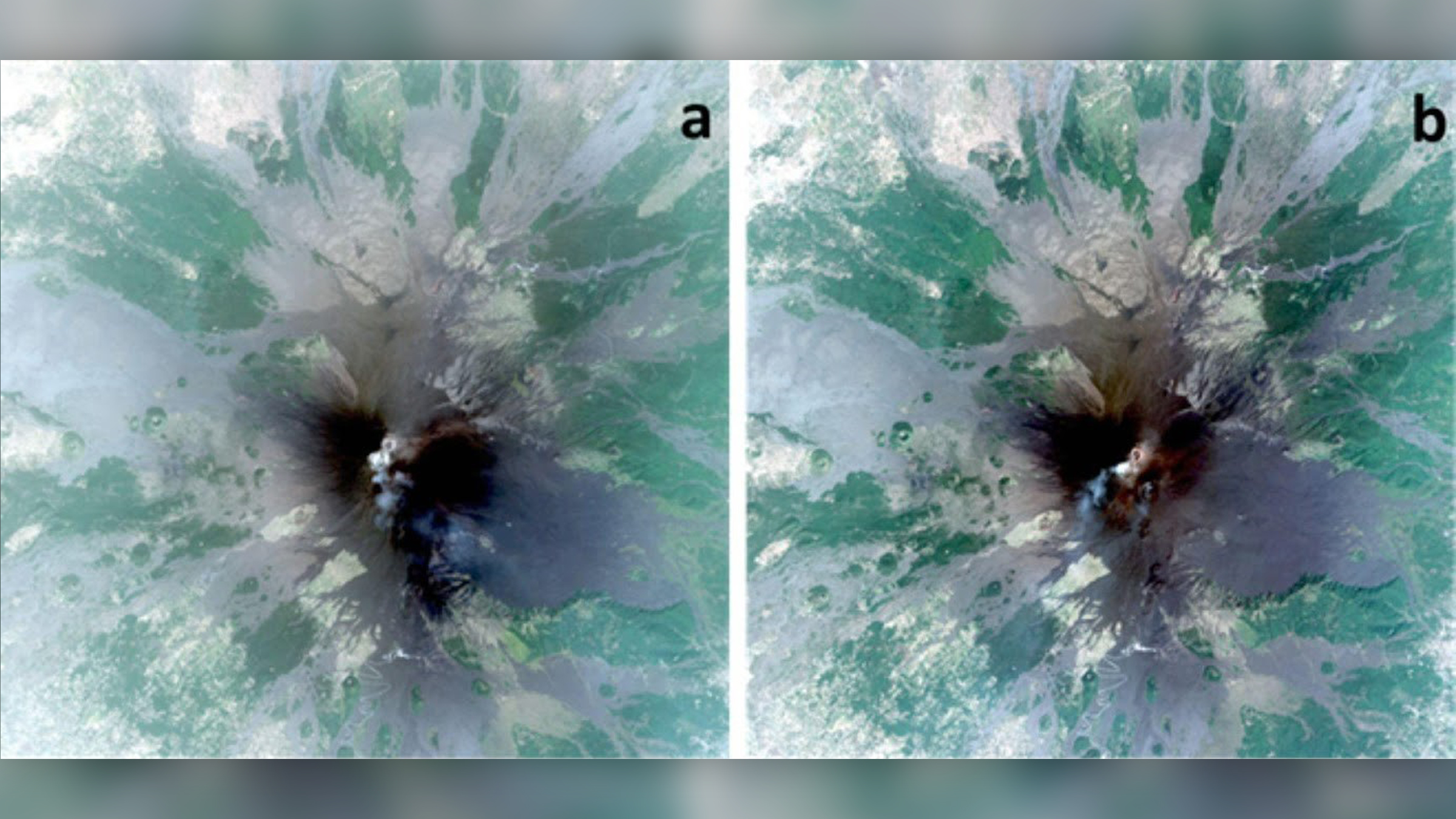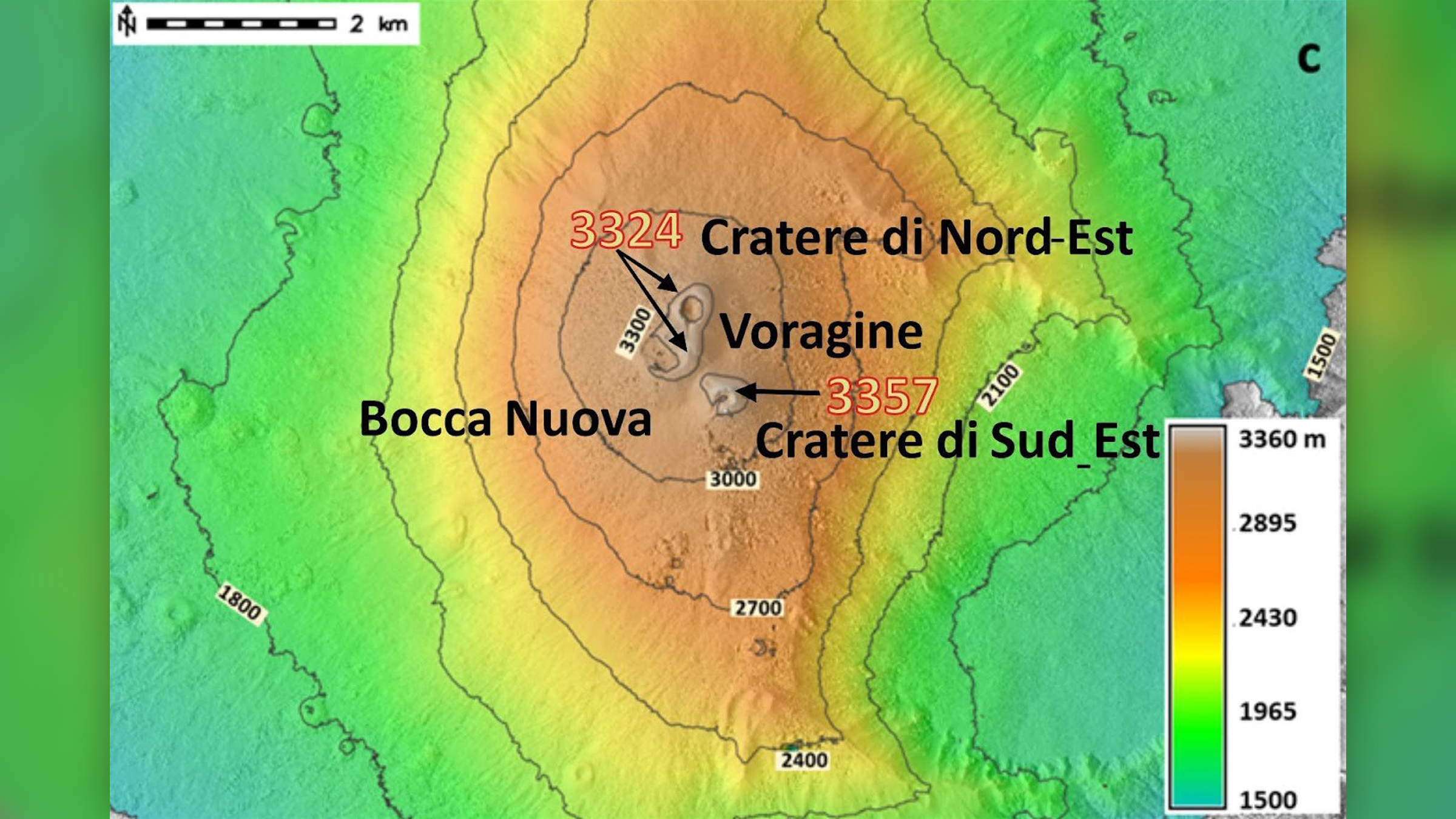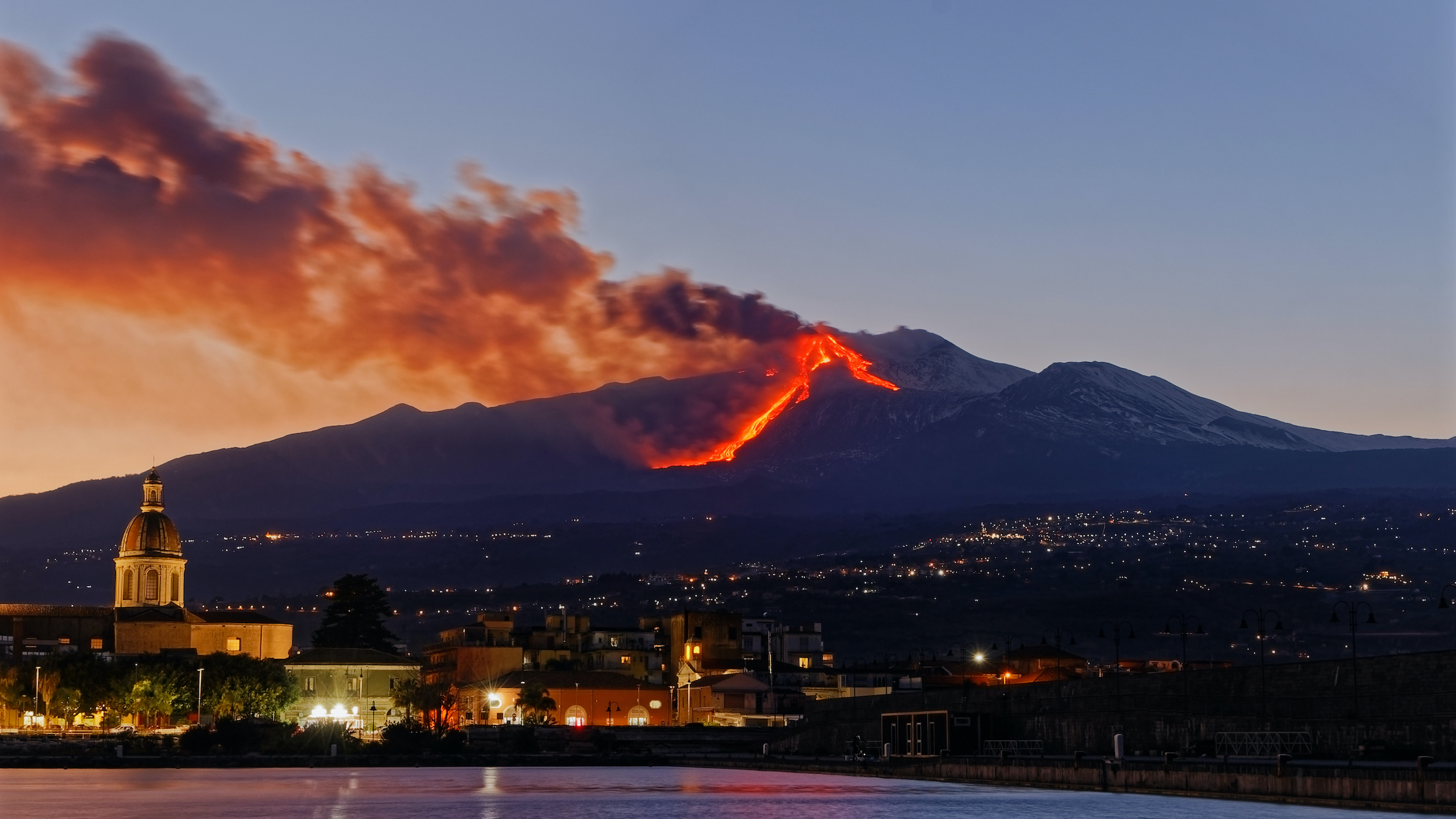Mount Etna is 100 feet taller than it was 6 months ago
It's the result of about 50 eruptions over the past half year.
Mount Etna, Europe's tallest and most active volcano, has erupted so much in the past six months, it has grown about 100 feet (30 meters) in height, satellite images reveal.
The youngest and most active of Etna's four summit craters — the southeastern crater — is now the tallest part of the volcano, towering 11,013 feet (3,357 m) above sea level, the tallest it has been in recorded history, according to the National Institute for Geophysics and Volcanology (INGV), located at the foot of Mount Etna in Catania, Sicily.
This sudden growth spurt is the result of about 50 eruptions at the southeastern crater since Feb. 16, 2021, which have led to a "conspicuous transformation of the shape of the volcano," the INGV reported in a translated statement released Aug. 10. Scientists discovered the explosive growth while analyzing images taken by the Earth-imaging Pléiades satellites on July 13 and July 25. The data have an uncertainty of about 10 feet (3 m), the INGV noted.
Related: 5 colossal cones: Biggest volcanoes on Earth
In fact, the southeastern crater is now taller than its "big brother," the northeastern crater, the tallest peak on Etna for the past 40 years.


After the northeastern crater erupted in 1980 and 1981, it reached a maximum height of 10,990 feet (3,350 m). But that height decreased over the years as the crater's edges collapsed. As of the summer of 2018, the northeastern crater measured 10,912 feet (3,326 m) tall.
Mount Etna is thought to have started as a submarine volcano that slowly grew above sea level as it erupted, time and again, gradually increasing its height with solidified lava, according to NASA's Earth Observatory. It's now largely covered with historic lava flows from eruptions that happened up to 300,000 years ago. To get a digital 3D view of Etna's summit, go here.
Get the world’s most fascinating discoveries delivered straight to your inbox.
Originally published on Live Science.

Laura is the managing editor at Live Science. She also runs the archaeology section and the Life's Little Mysteries series. Her work has appeared in The New York Times, Scholastic, Popular Science and Spectrum, a site on autism research. She has won multiple awards from the Society of Professional Journalists and the Washington Newspaper Publishers Association for her reporting at a weekly newspaper near Seattle. Laura holds a bachelor's degree in English literature and psychology from Washington University in St. Louis and a master's degree in science writing from NYU.



